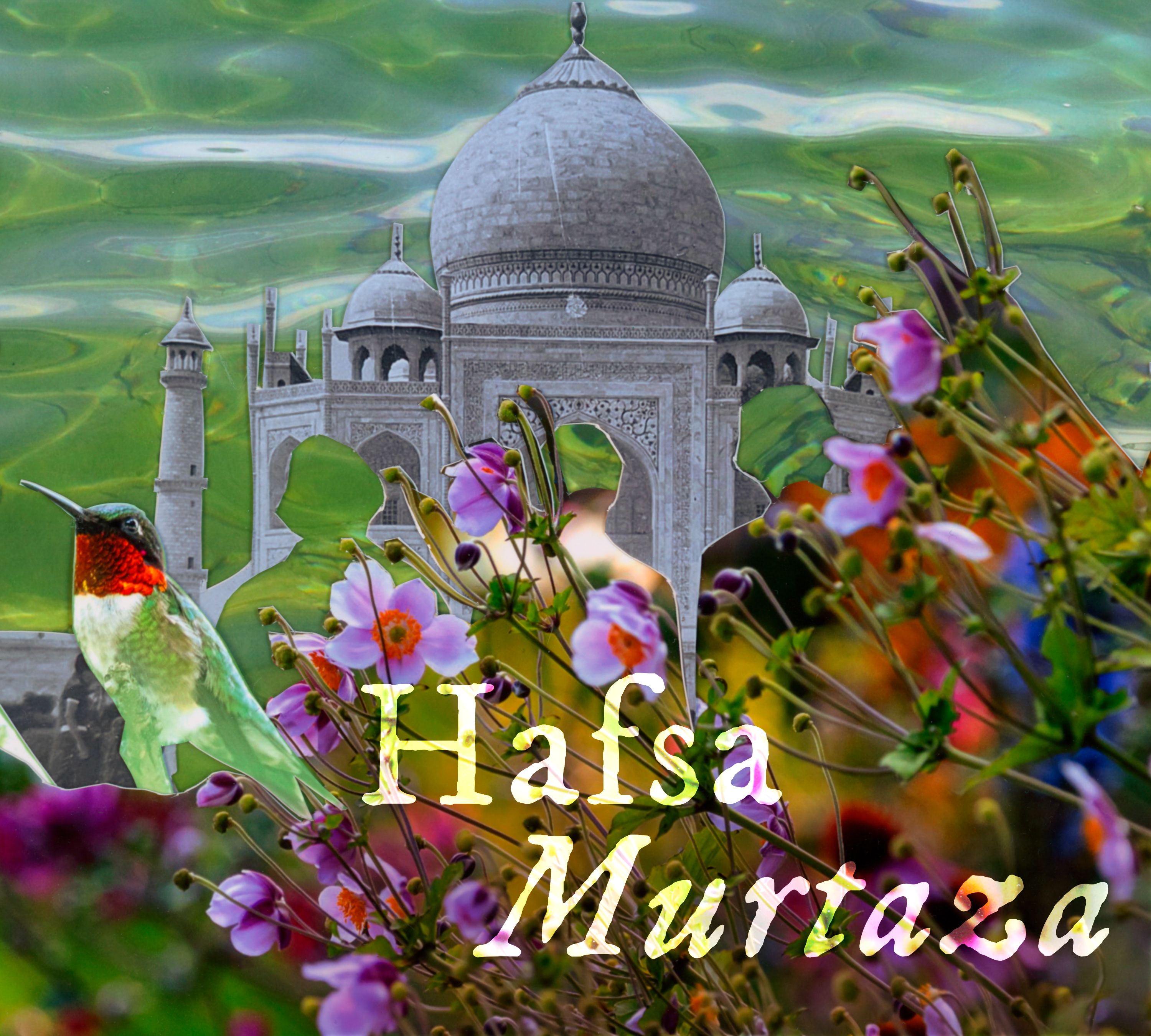Hafsa Murtaza, The Pattern of Mortal and Immortal Life, 2024
Graphic design
16" x 10"
The Mughal Garden in Delhi’s Red Fort, Bagh-i-Hayat Bakh, translating to The Life Bestowing Garden, parallels mortal and immortal life by eternalizing the gardens’ planted flowers in pietra dura–cut inlay marble–flower tiles embellishing the architectural pavilion. The Islamic Mughal Empire of the Indian Subcontinent believed in Judgment Day and the immortal afterlife. The understanding that a Soul’s life exceeds a mortal human’s lifespan is manifested in the marble tile pattern of a stone flower stemming from a single base that will never wither with the seasons as the mortal and fragile flowers planted in the four-part Char Bagh garden will. The mortal garden and immortal architecture are connected by a water channel in the central axis, as water is an Islamic symbol of truth and the basis of all life.
The mortal garden has flowers from various regions and nations: Raat Ki Rani Indian Jasmine, Middle Eastern Borage and North American Ecinechea, Rudbeckia and Gaura. By incorporating several regional flowers, I strived to dissolve terrestrial barriers and unite people of perceived differences under the shared experience of life and mortality as symbolized in flowers that bloom one day and wilt the next.
